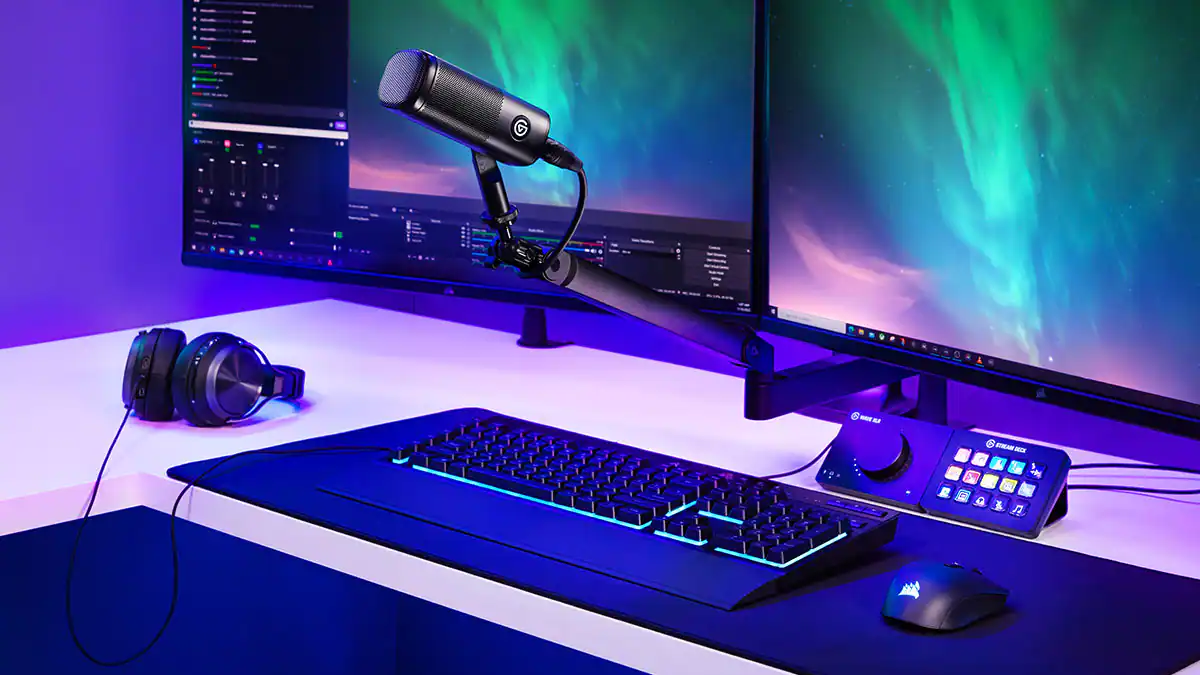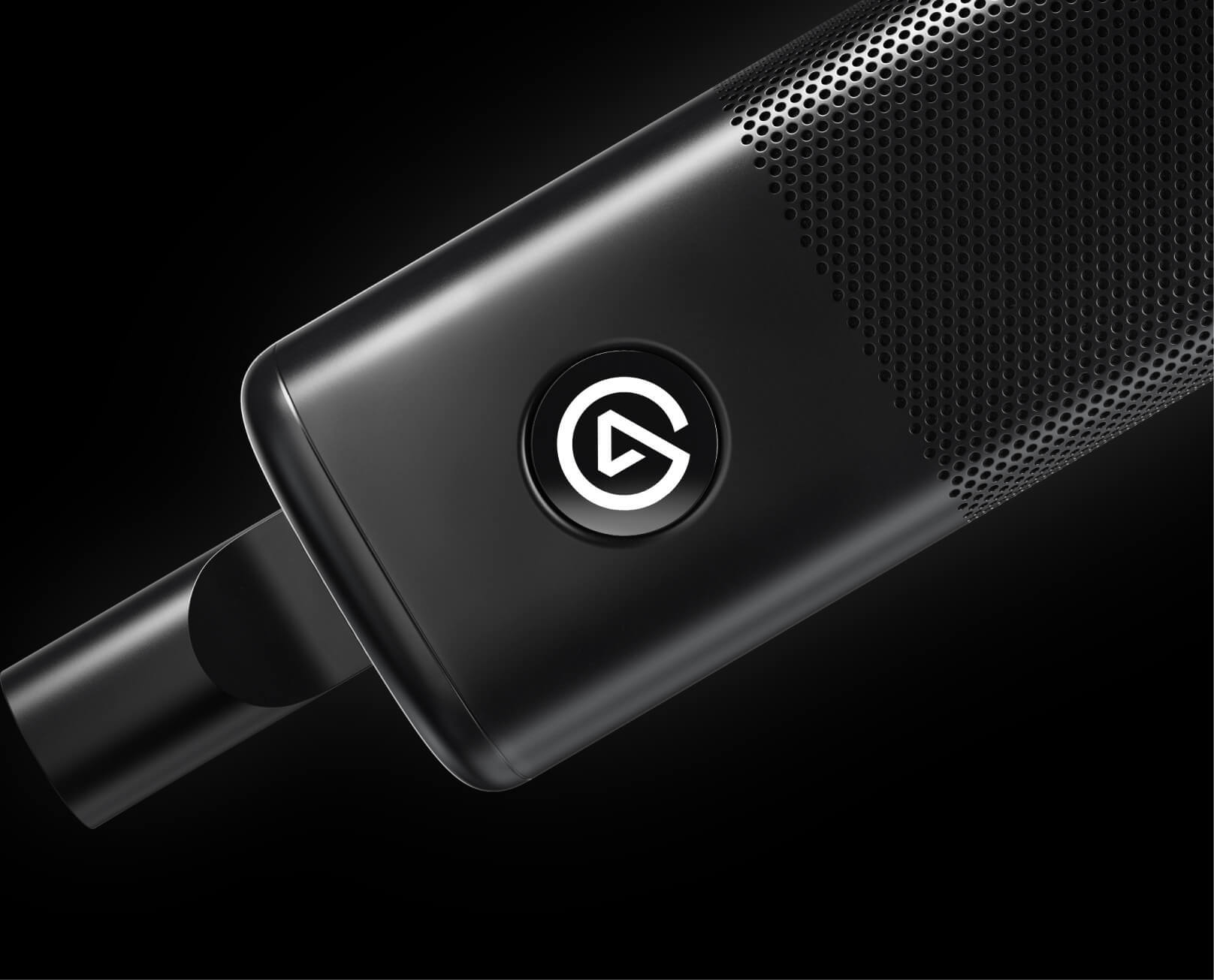I did not realise that the Elgato Wave DX was so inexpensive until I did some research in writing this review. I actually thought the price tag would be much higher. This is incredible. For a shave over $Aus150 you get a XLR microphone that is of incredibly high quality and will work, effortlessly, for just about anything you’d want to do with gaming.
XLR is the professional standard connection port for microphones, and once you actually use the thing you realise just how advantageous it is. Without getting too technical, XLR uses three pins and a connector for a reason – it delivers a balance in the signal to the microphone, meaning a far better sound capturing experience. Thanks to that, XLR microphones are better at shutting out background noise, and, while setup is a pain (as you’ll need some form of interface to run between the mic and your PC), you end up with a lot more control over the production of the sound. XLR has been around since the 50s and has remained the standard for professional audio recording for reason. The fact that Elgato is offering XLR quality at the kind of price point you’d expect to see for a (vastly inferior) USB microphone is amazing.
I will say that there is a caveat to that though. Depending on what equipment you’ve already got, the actual cost of the microphone is going to be more than just the mic itself. As mentioned, you’ll need an interface for a start. Elgato sent me the Wave XLR (a device that costs more than the mic itself!) to use in testing, and while this isn’t a review of that device I will say I switched over to my Maono sound card almost instantly. You’ll also need a stand for the microphone (and annoyingly there seems to be a lack of standards among stands, as the Wave DX was not compatible with the stand I use for my Rode mic), and the XLR cord itself. So, unless you’ve used XLR mics in the past, the chances are that you’re in for some additional costs before you’re using the Wave XLR.
Once you get going, though, this microphone really is excellent. I’ve been using the Wave DX for my videos and streams in the past couple of weeks, so watch the one above to hear the results, but the crux of the matter is that it’s surprisingly good with plosive sounds, surprisingly good at handling my head moving a bit as I talk (some other mics have a far quicker drop-off than this), and as a dynamic mic, does a good job with a range of volumes that are blasted at it. Because it is a dynamic mic, it doesn’t require a power source, and so it is compatible with any interface that you might come across. Elgato would naturally suggest you use the Wave XLR, but it’s not essential.
Combined with the noise-cancelling tech in my Maono interface, I’ve been able to stream during storms and even as a truck drove by right outside my home, and I don’t believe it picked up much, if any of it. Those who have been following me on YouTube for a while know how much difficulty I used to have with outside noises and USB mics. The Rode was itself a solution, but the Wave XLR does it just as well, and at a vastly cheaper price.
The build quality of the mic is good, too, with a durable, hard plastic shell. There’s no need for an external pop filter or shock mount to deliver quality sound, so the Wave DX is very efficient with the space it takes up. It’s not a device that you’ll be carrying around, since set-up and take-down are a process, but if you were to, say, throw the occasional arm around as you were podcasting, and were it to connect with the device, and send it flying into a wall or similar, then it’s not going to shatter inside and stop working. Your audience will not be amused from the sudden assault on your ears, but at least you’ll be able to apologise immediately and not go looking for a new mic.
Thanks to the presence of the interfaces, regardless of which one you use, there’s a lot you can do to control the tone and quality of sound being captured by the Wave DX. I must admit that I hate my “radio voice” so I tweak settings ever so slightly to lower my voice a bit with this device, and I’m quite happy with how responsive the Wave DX is for that.
Finally, because the asking price of the Wave DX is fairly low, this may well be people’s first foray into XLR devices. I do think there will be some shock with the peripheral costs of all the bits you need for a mic – going from USB plug-and-play to an Ikea manual setup is a wallet-busting jump. However, I’m very impressed with how easy Elgato makes it to get started. I might not be a fan of the Wave XLR, but it is an elegantly minimalistic device and once you have all the bits you can be recording something very quickly, with minimal settings to play with. This is as plug-and-play as XLR gets, and that makes it the perfect stepping stone into more serious broadcasting.
The Wave DX has been designed for streamers and YouTube videos, and Elgato knows this market. Making the XLR microphone space affordable and accessible to people who are not technically inclined can only yield good results for everyone.













